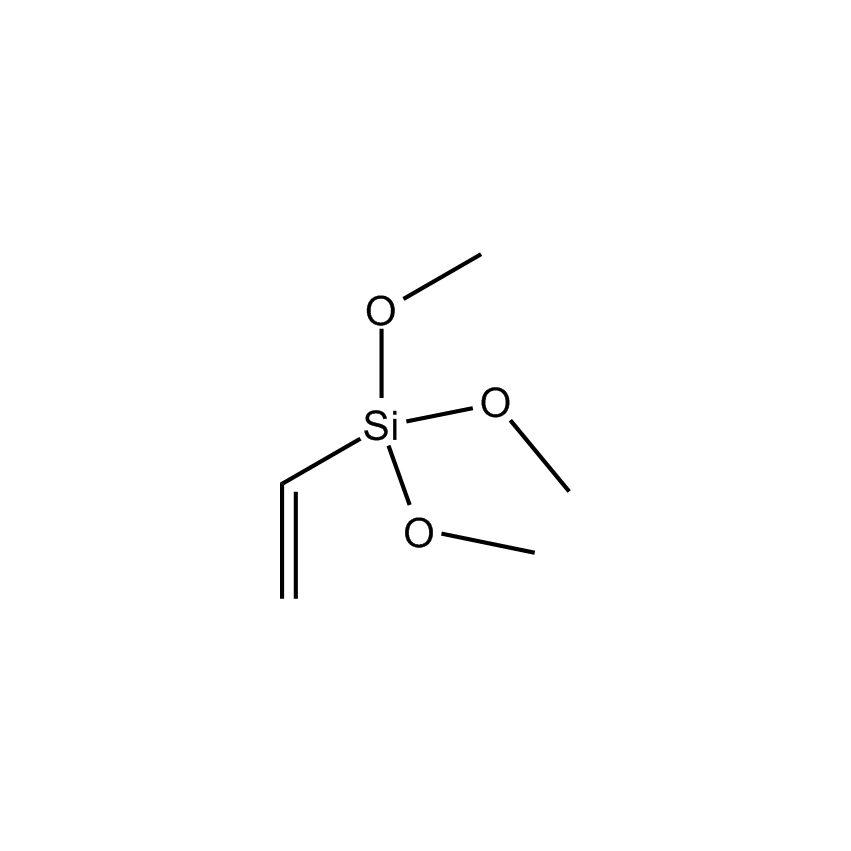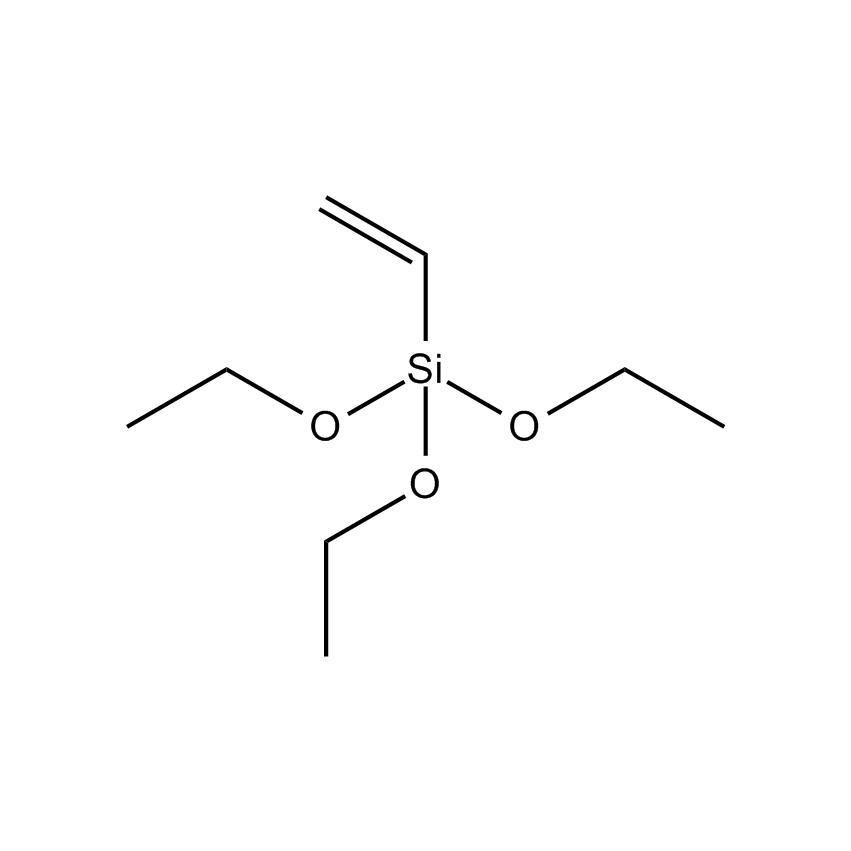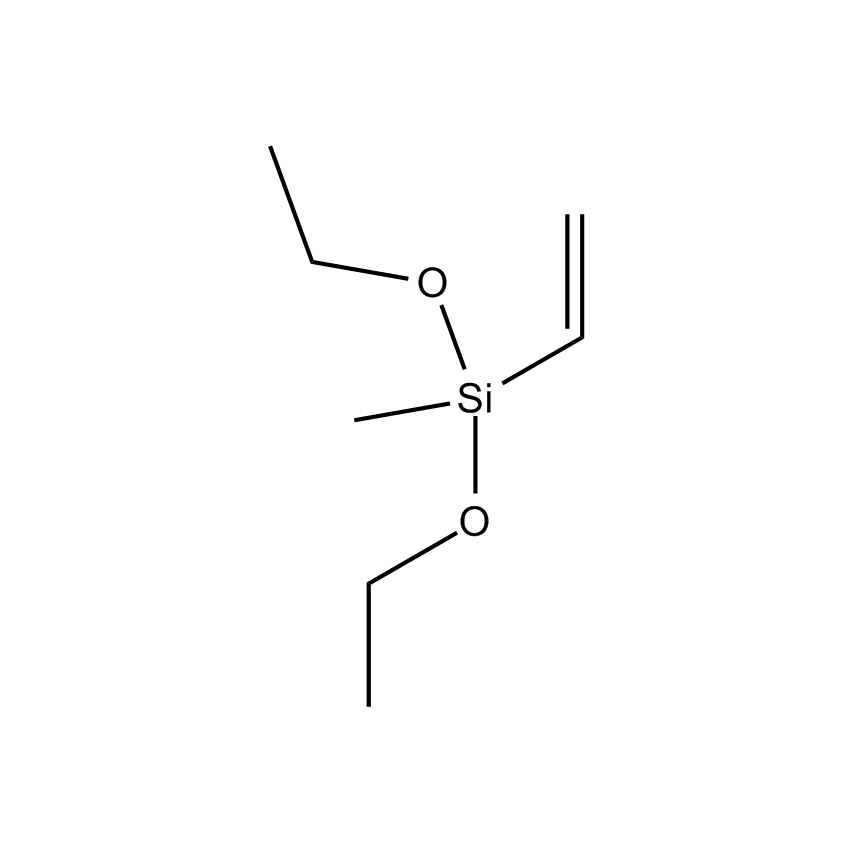Additional Properties
- Einecs Number 220-449-8
- HMIS 3-3-1-X
- Molecular Formula C5H12O3Si
- Molecular Weight (g/mol) 148.23
- Purity (%) 97%
- TSCA Yes
- Autoignition Temp (˚C) 235
- Boiling Point (˚C/mmHg) 123
- Density (g/mL) 0.970
- Flash Point (˚C) 28 °C
- Refractive Index @ 20˚C 1.3930
- Specific Wetting (m2/g) 528
- Viscosity at 25 ˚C (cSt) 0.6
Application
Employed in two-stage1 and one-stage2 graft polymerization/crosslinking for PE
Copolymerizes with ethylene to form moisture crosslinkable polymers.3
Converts arylselenyl bromides to arylvinylselenides.4
Reacts with anhydrides to transfer both vinyl and methoxy and thus form the mixed diester.5
Cross-couples w/ ?-bromo esters to give ?-vinyl esters in high ee.6
Reference
1. Scott, H. U.S. Patent 3,646,155, 1972.
2. Swarbrick, P. et al. U.S. Patent 4,117,195, 1978.
3. Isaka, T. et al. U.S. Patent 4,413,066, 1983.
4. Bhadra, S. et al. J. Org. Chem. 2010, 75, 4864.
5. Luo, F. et al. J. Org. Chem. 2010, 75, 5379.
6. Strotman, N. A.; Sommer, S.; Fu, G. C. Angew. Chem., Int. Ed. Engl. 2007, 46, 3556.
Safety
Olefin Functional Trialkoxy Silane
Silane coupling agents have the ability to form a durable bond between organic and inorganic materials to generate desired heterogeneous environments or to incorporate the bulk properties of different phases into a uniform composite structure. The general formula has two classes of functionality. The hydrolyzable group forms stable condensation products with siliceous surfaces and other oxides such as those of aluminum, zirconium, tin, titanium, and nickel. The organofunctional group alters the wetting or adhesion characteristics of the substrate, utilizes the substrate to catalyze chemical transformations at the heterogeneous interface, orders the interfacial region, or modifies its partition characteristics, and significantly effects the covalent bond between organic and inorganic materials.
Alkenylsilane Cross-Coupling Agent
The cross-coupling reaction is a highly useful methodology for the formation of carbon-carbon bonds. It involves two reagents, with one typically being a suitable organometallic reagent - the nucleophile - and the other a suitable organic substrate, normally an unsaturated halide, tosylate or similar - the electrophile.
Vinyltrimethoxysilane; Ethenyltrimethoxysilane; Trimethoxyvinylsilane; Trimethoxysilylethylene, VTMS
Silicon Chemistry, Articles
Hatanaka and Hiyama first reported the palladium-catalyzed, fluoride-promoted reaction of aryl, alkenyl, allyl, and ethynyltrimethylsilanes with aryl, vinil and allyl halides to form the respective cross-coupled products






